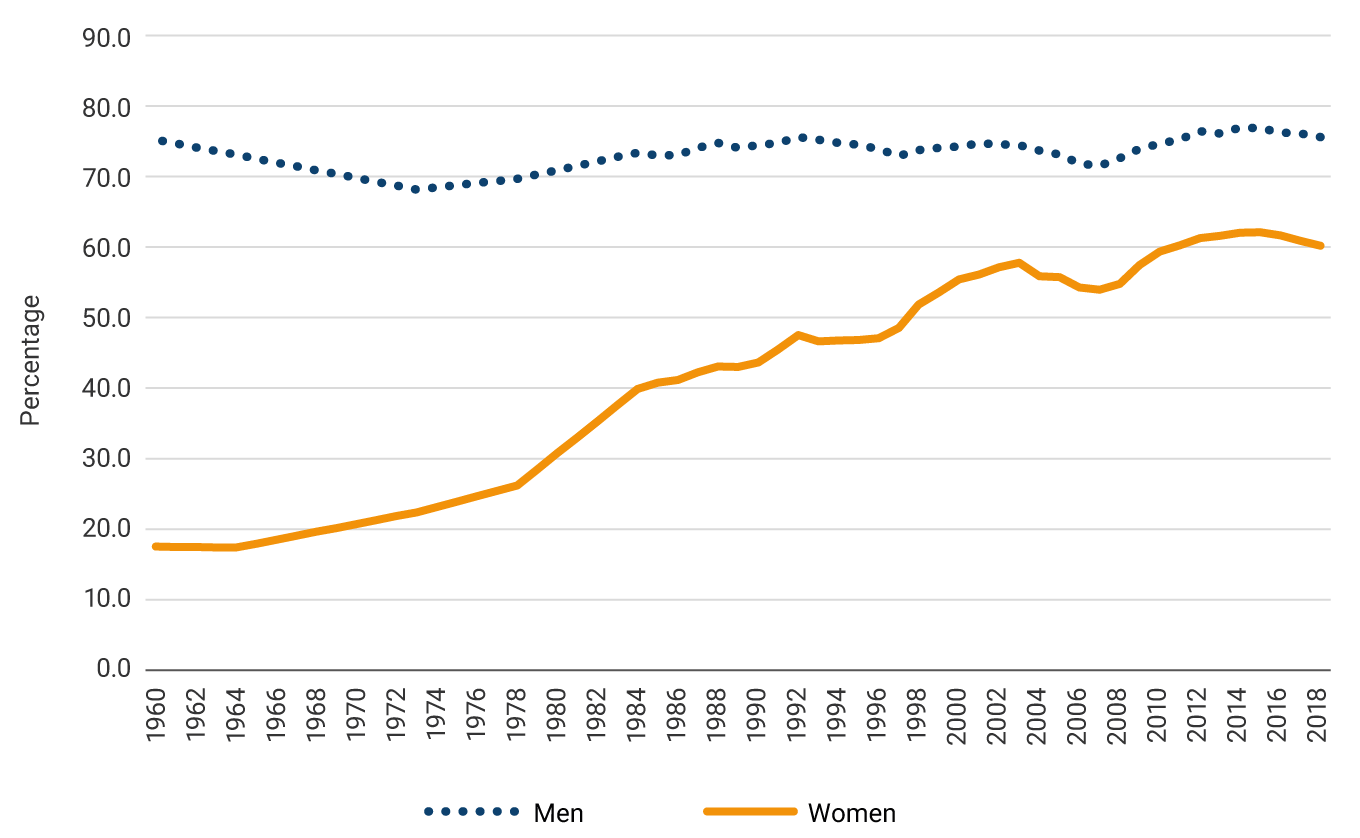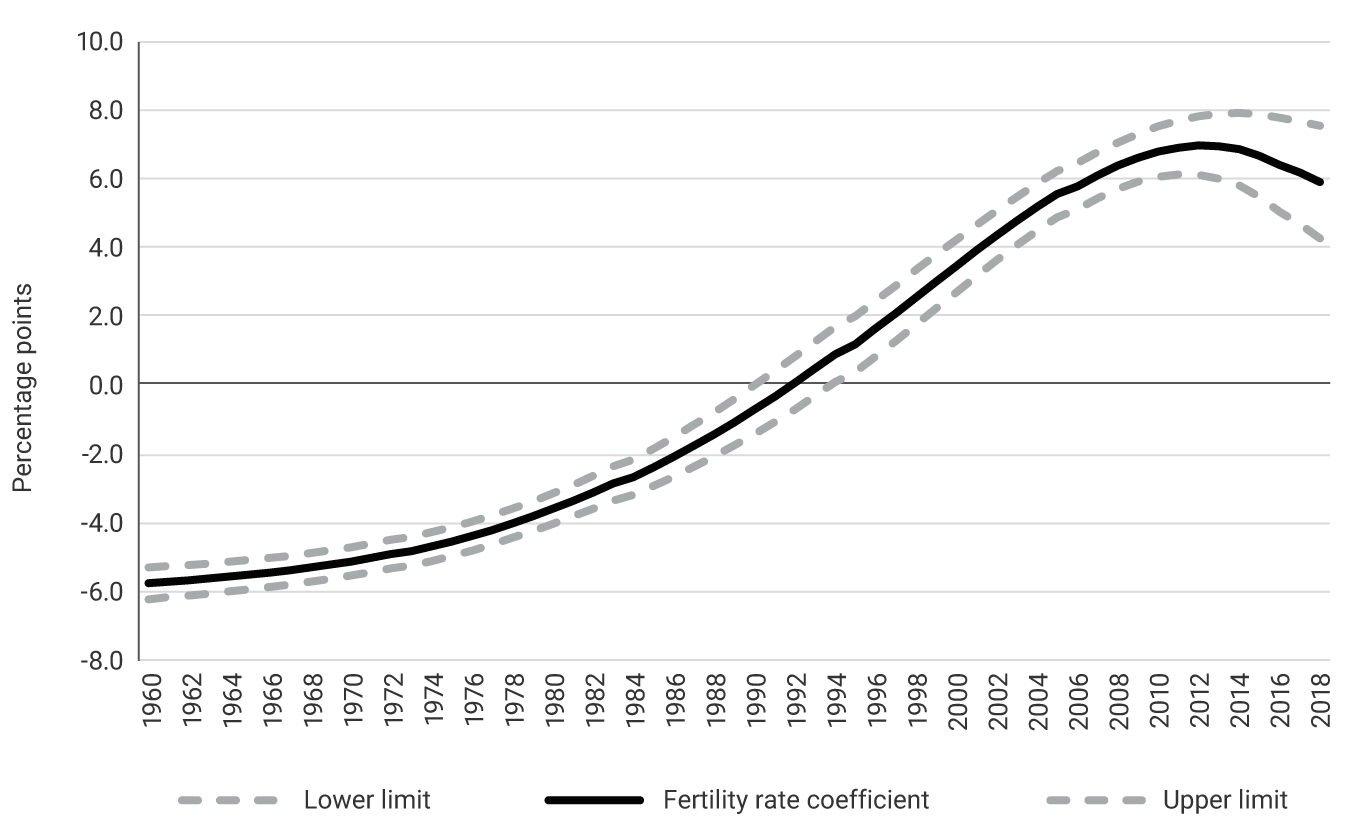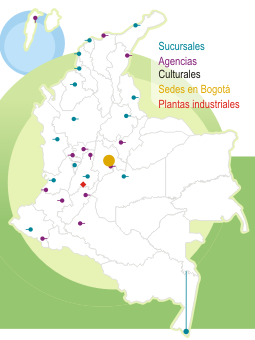During the 20th century, women in Colombia achieved an important milestone by significantly increasing their participation in the labor market, especially in the second half of the century. As can be seen in Graph 1, female labor participation (the fraction of working-age women working or looking for work) increased from 18% in 1951 to 26% in 1978, then to 47% in 1992, to 55% in 2000, and finally to 60% in 2018, while male participation remained relatively stable at around 75%. This increase in women's labor participation can be attributed to the considerable advances in education, fertility, and civil and political rights that women experienced during this period.
Graph 1. Male and female labor force participation rates, 1960-2018 (Seven-city average)

Source: Iregui-Bohórquez et al. (2023).
A recent study published in the series Working Papers on Economics, in which researchers from Banco de la República (the Central Bank of Colombia) participated, analyzes the main determinants of women's labor participation in Colombia since 1960. The authors examine the factors that influenced women's employment opportunities and highlight the importance of historical context to understand this relationship in the spirit of the work done by Claudia Goldin, winner of this year’s Nobel Prize in economics for her study of the economic history of women in the United States, particularly gender differences in the labor market.
The results of the study show that one of the most significant transformations that impacted women's labor participation in Colombia since the late 1960s was the demographic transition. This transition is mainly attributed to the decline in the fertility rate associated with the reduction in infant mortality, access to contraceptive methods, changes in social norms, and greater access to education for women.
Graph 2 illustrates the estimated effect of fertility on female labor participation in Colombia between 1960 and 2020. As may be seen, between the 1960s and 1970s, relatively high fertility had a negative impact on women's labor participation. In addition, the article highlights that during this period, women’s labor participation experienced a significant increase as more women chose to pursue higher education. The results also exhibit that since 1980, married women have increased their presence in the labor market. The authors also found that the rapid and steady economic growth observed during this period stimulated women's participation in the country's labor force.
Between 1980 and 1995, the negative impact of fertility on women's labor force participation gradually declined, following a pattern similar to the one observed in high-income countries during the 1960s and 1980s. In addition, the authors identified a reduction in the negative impact of the infant mortality rate on female labor participation, which can be attributed to improvements in health infrastructure and advances in medical technology that reduced the time women spent caring for sick children at home.
Subsequently, since the early 1990s, there have been significant advances in legislation and policies aimed at promoting gender equality and increasing women's participation in politics. During the period from 1995 to 2010, the authors highlight the continuing impact of higher education in driving greater participation of women in the labor market. Along with the expansion of educational opportunities, there was a notable increase in their participation rate. This result reflects changes in social norms and attitudes, contributing to a more gender-equitable workforce.
Graph 2. Effect of the fertility rate on female labor participation in Colombia: estimation result with coefficients that change over time
Note: The area between the lower limit and the upper limit indicates the confidence interval for the effect of the fertility rate.

Source: Iregui-Bohórquez et al. (2023).
Real per capita gross domestic product (GDP) growth also played a crucial role in explaining the increase in female labor force participation, especially since 2003, when the country experienced positive economic growth rates driven by the commodity price boom. These findings highlight the complex interaction between social dynamics, economic conditions, and individual choices in shaping women's labor market participation.
During the last decade (2010-2018), women's labor market participation reached its peak, as seen in Graph 1. The more recent decline in the effect of fertility on labor participation suggests a change in gender social norms, where married women with children are no longer excluded from the paid labor market. Moreover, with low fertility rates, an additional child no longer implies a reduction in women's labor participation. On the other hand, male labor force participation remained stable during this period and showed a positive correlation with female participation, suggesting a complementary rather than a substitute relationship between men's and women's work.








































































